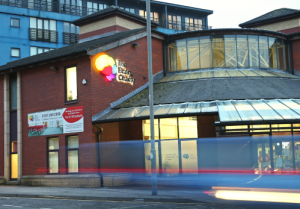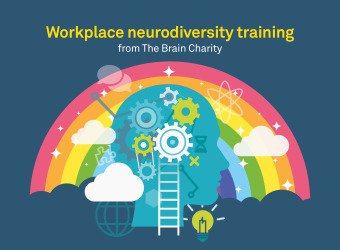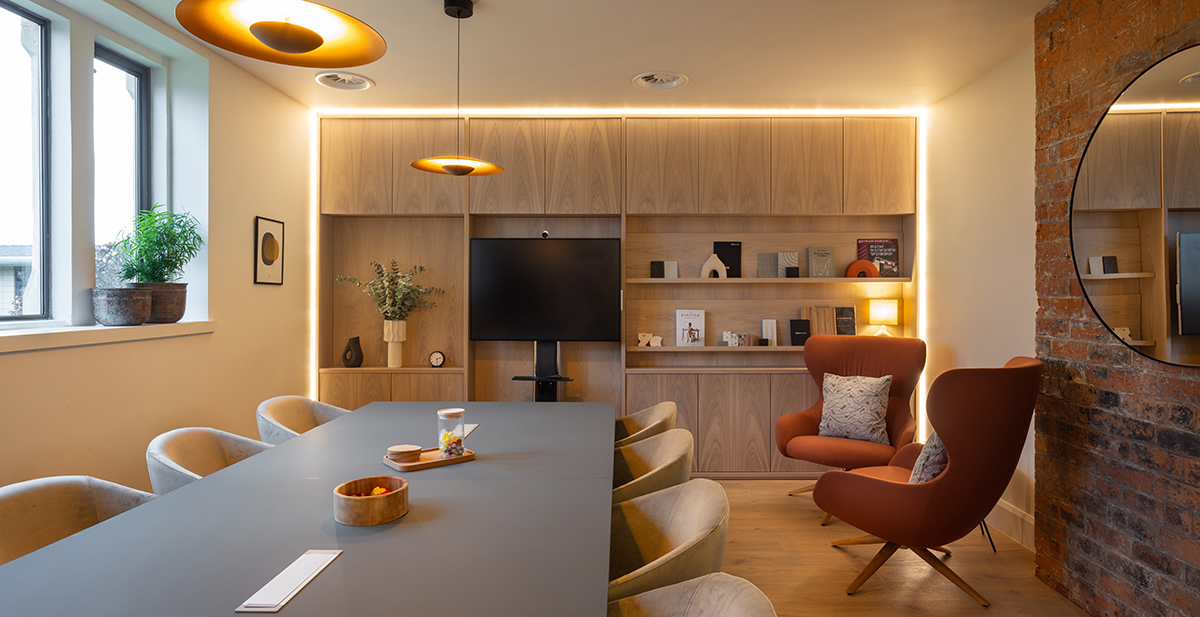
How neurodivergent-friendly design transforms modern workplaces
Guest blog by OP Group
In today’s rapidly evolving work landscape, designing inclusive environments has become more than a trend — it’s a necessity. With a growing awareness of neurodiversity and the unique needs of individuals with conditions such as autism, ADHD, epilepsy, and brain injury, businesses are beginning to reimagine their workspaces to support all types of minds. As part of their current quarterly charity initiative, OP Group has partnered with The Brain Charity to raise both awareness and funds to support people living with all forms of neurodivergence and neurological conditions.
On behalf of our clients, volunteers, and staff, we thank OP for their support and commitment. Their expertise in creating neurodivergent-friendly workplaces and their drive to share those insights reflect values closely aligned with our own. In this guest blog, OP Group explores how thoughtful, inclusive design can transform modern workplaces into environments where every individual has the opportunity to thrive.
OP Group’s guide to inclusive office design
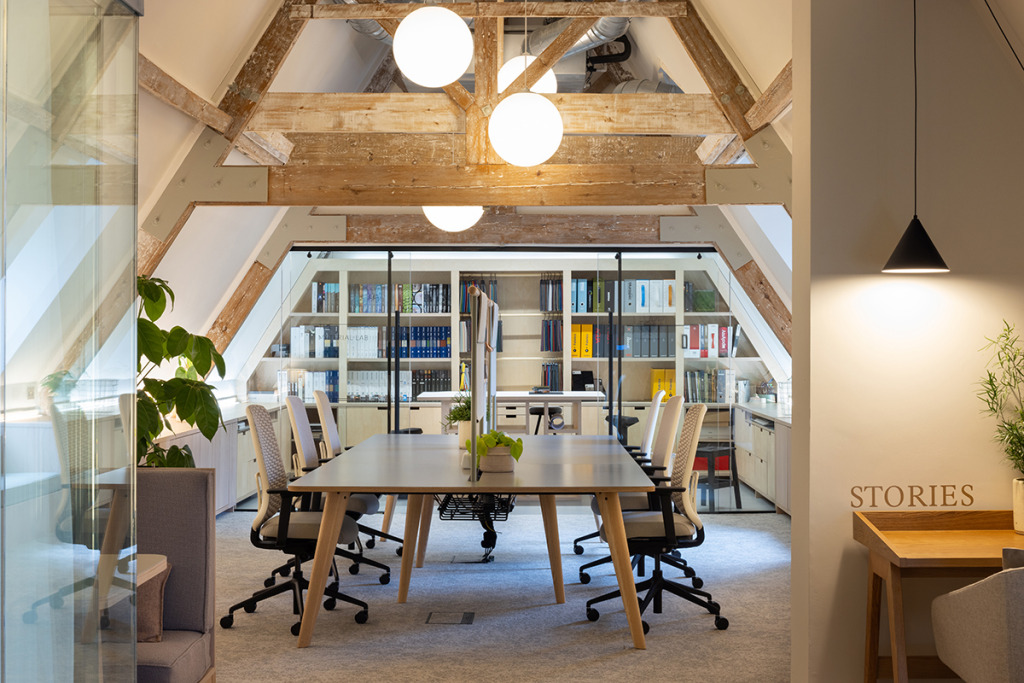
With over 600 different neurological conditions impacting people’s lives, creating inclusive workplaces isn’t just about compliance, it’s about recognising and celebrating the diversity of human brains.
At OP, we specialise in creating workplace environments that work for everyone. As office fit out specialists, we’ve seen firsthand how thoughtful design can transform not just spaces, but people’s working lives.
This blog shares our insights on designing inclusive environments that support neurological diversity while benefiting entire organisations.
Understanding diverse workplace neurological needs
People with neurological conditions experience work environments in wonderfully diverse ways. Someone with autism might be sensitive to fluorescent lighting, while a colleague with ADHD may need movement to regulate energy levels. Someone recovering from stroke might require different visual considerations, while a person with epilepsy needs specific lighting controls.
Understanding these diverse needs reveals that workplaces designed with neurological diversity in mind aren’t special accommodations, they’re simply better workplaces for everyone.
Essential design elements
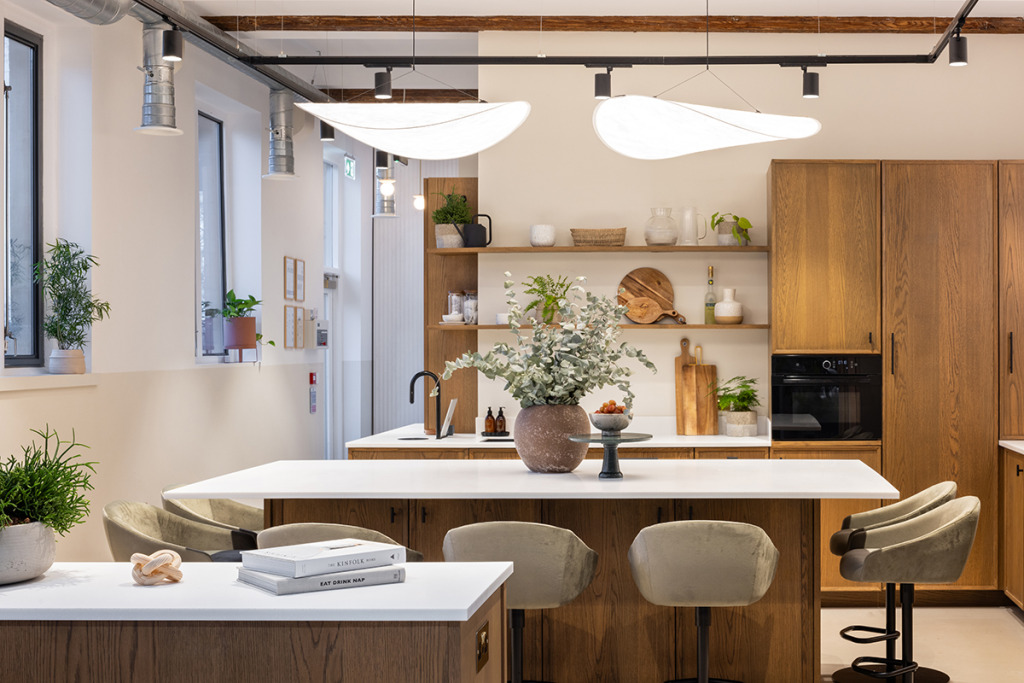
Creating neurodiverse workplaces starts with understanding that that different people have different needs. The most effective approach involves designing flexible environments that offer choice and control, allowing employees to find spaces that work best for their individual needs throughout the day.
Flexible workspace
Successful inclusive workplaces create distinct zones serving different neurological needs:
- Focus zones: Quiet, controlled environments with acoustic materials and adjustable
- Collaboration areas: Well-designed spaces with clear boundaries and office acoustic control, containing energy while preventing disruption to quieter zones.
- Movement zones: Spaces supporting physical activity and energy regulation, from standing desks to brainstorming lounge.
- Recreational and wellness spaces: Areas specifically designed for sensory breaks, mental reset, and symptom management.
Environmental control
The physical environment from sound levels to lighting quality can significantly impact how people with neurological conditions experience their workplace. Providing employees with control over their immediate environment isn’t just about comfort; it’s about enabling them to manage their symptoms and perform at their best.
- Sound management: Strategic office acoustic design using sound masking, acoustic panels, and buffer zones between high-energy and quiet areas.
- Adaptive lighting: For someone with epilepsy, flicker-free lighting is essential. For colleagues with autism or brain injuries, control over brightness and colour temperature prevents sensory distress. Solutions include dimmable LED systems, natural light management, and personal control options.
- Climate comfort: Localised temperature control and proper ventilation reduce the cognitive load of processing uncomfortable conditions.
Visual design
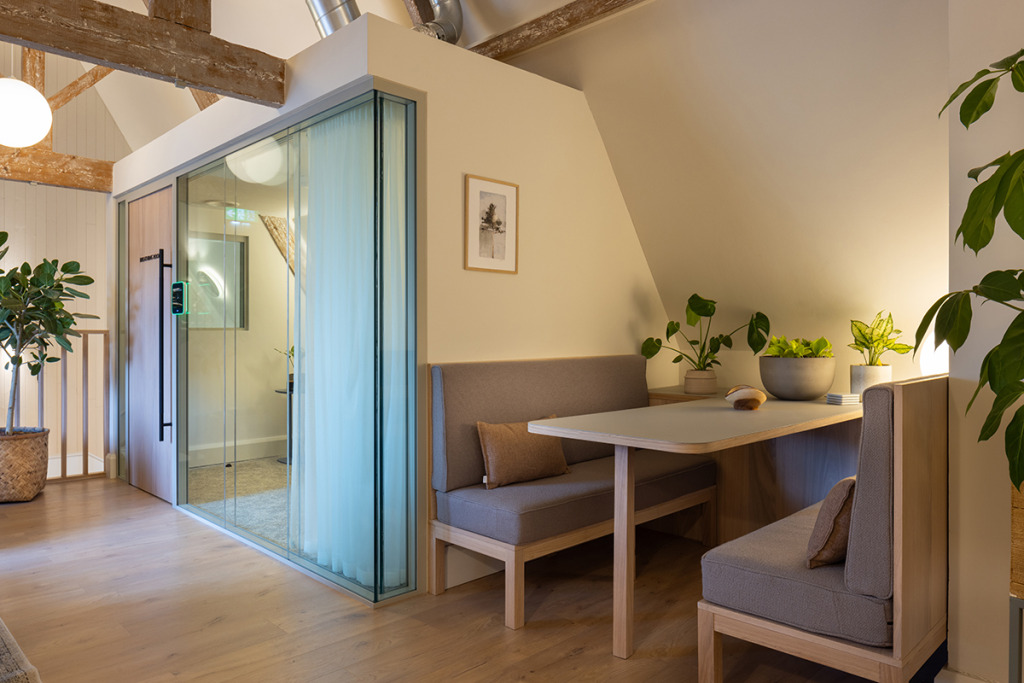
The visual environment could impact concentration and emotional regulation, particularly for people with neurological conditions who may process visual information differently or be more sensitive to certain colours and patterns.
Effective colour psychology strategies use neutral foundations with strategic accents, avoiding overstimulating environments. Bright colours can be too intense and distracting, while subtle, calming palettes support focus and wellbeing across all neurological needs.
Key considerations for inclusive visual design include:
- Neutral base palettes: Soft whites, muted blues, gentle greens, and warm beiges create calming backgrounds that don’t compete for attention.
- Consistent colour schemes: Avoiding abrupt colour changes between spaces that can be jarring and require additional mental processing.
- Matt finishes: Glossy surfaces can create glare and visual distraction, while matt finishes are easier on the eyes.
- Balanced contrast: Minimising stark contrasts between adjacent colours to prevent visual stress.
- Natural elements: Incorporating wood tones and plant life provides visual interest without overwhelming stimulation
Making a difference
Companies that embrace inclusive design often discover that supporting diverse neurological needs creates competitive advantages that benefit the entire organisation.
- Productivity gains: Improved focus and task completion in supportive environments
- Enhanced wellbeing: Reduced environmental stress, decreased absenteeism, and better mental health outcomes
- Talent attraction: Attracting skilled professionals who value inclusive workplace environments
- Innovation through diversity: Diverse teams consistently drive better problem-solving and creative outcomes
Looking forward
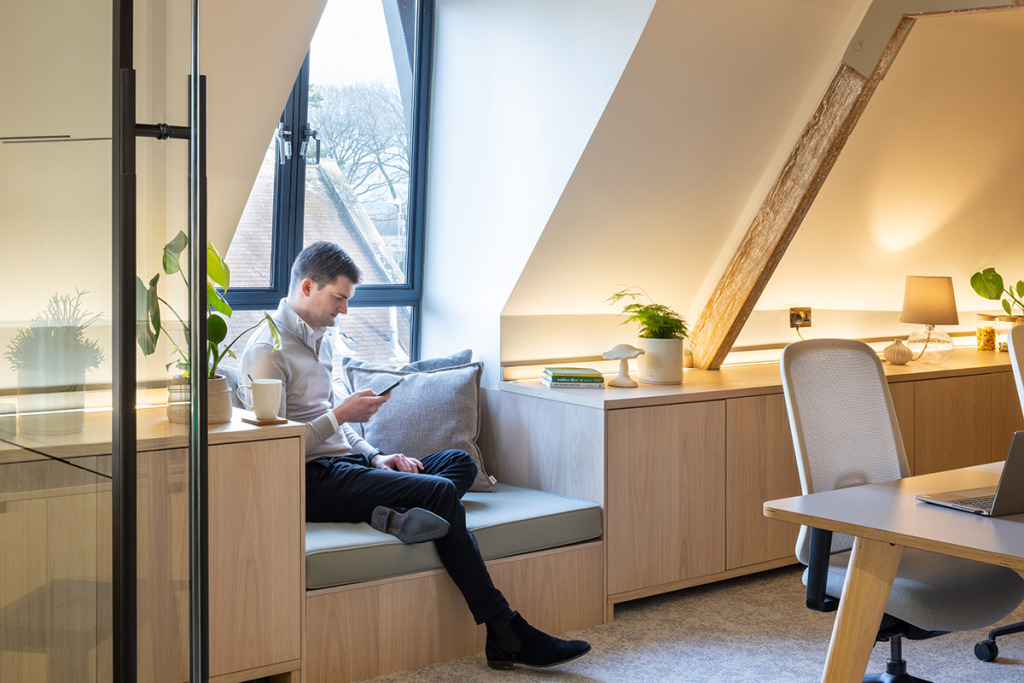
The principles of neurologically inclusive design are becoming essential elements of modern office interior design strategy. Emerging trends include biophilic design for sensory regulation and smart building technology for personalised environmental conditions.
A truly effective workplace isn’t just visually appealing, it’s purposefully crafted to support how different minds work, process information, and interact with their environment.
The goal is to create thoughtful, flexible spaces where every individual can access their potential.
For hundreds of thousands of people across the UK living with neurological conditions, the workplace can become a space of opportunity, growth, and belonging. The best workplaces are the ones where people want to be. They’re spaces that understand different needs and make room for different ways of working.
Categories: Guest blogs, Neurodiversity, News
Published: 12 September 2025



